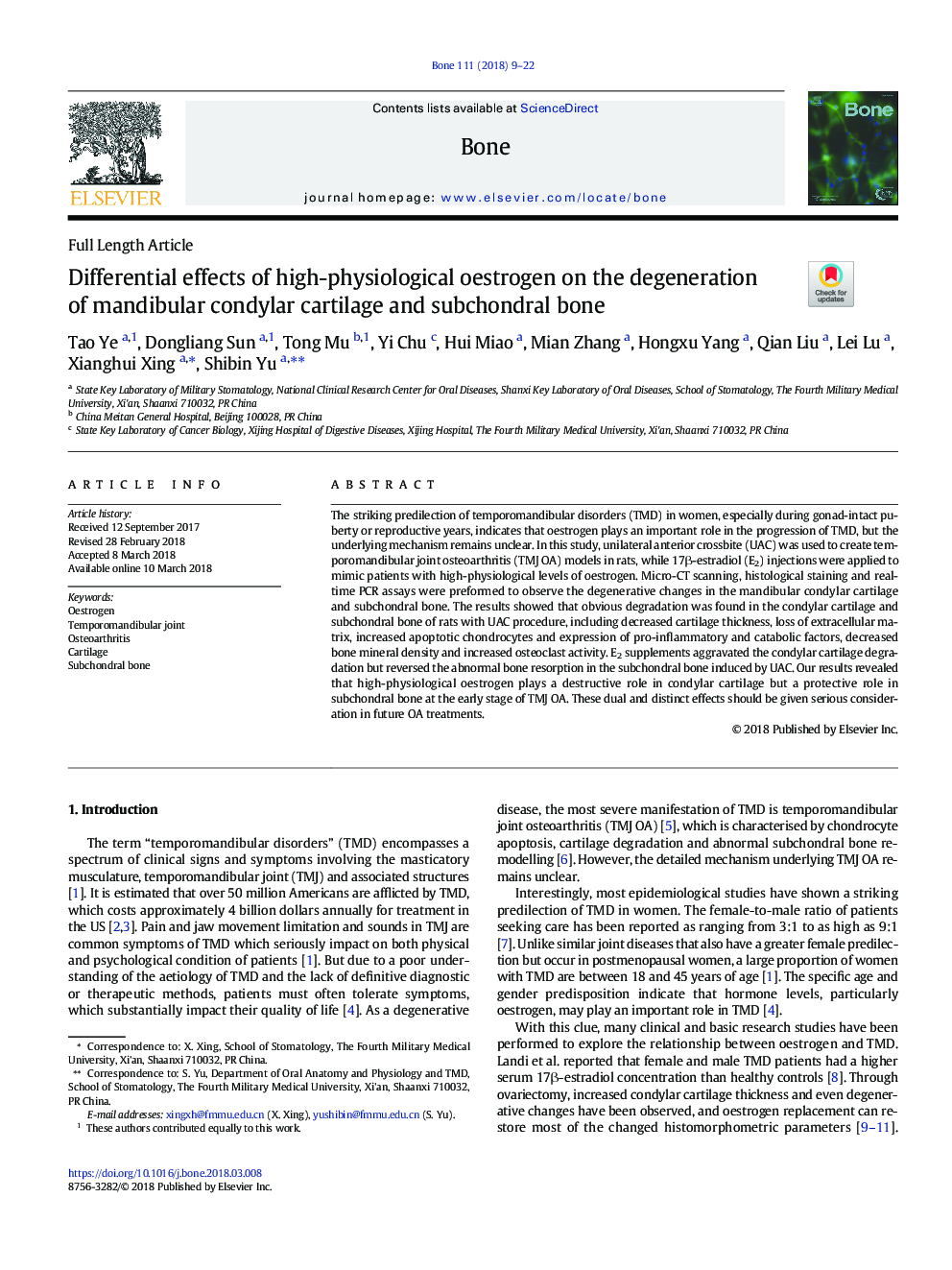| Article ID | Journal | Published Year | Pages | File Type |
|---|---|---|---|---|
| 8624895 | Bone | 2018 | 14 Pages |
Abstract
The striking predilection of temporomandibular disorders (TMD) in women, especially during gonad-intact puberty or reproductive years, indicates that oestrogen plays an important role in the progression of TMD, but the underlying mechanism remains unclear. In this study, unilateral anterior crossbite (UAC) was used to create temporomandibular joint osteoarthritis (TMJ OA) models in rats, while 17β-estradiol (E2) injections were applied to mimic patients with high-physiological levels of oestrogen. Micro-CT scanning, histological staining and real-time PCR assays were preformed to observe the degenerative changes in the mandibular condylar cartilage and subchondral bone. The results showed that obvious degradation was found in the condylar cartilage and subchondral bone of rats with UAC procedure, including decreased cartilage thickness, loss of extracellular matrix, increased apoptotic chondrocytes and expression of pro-inflammatory and catabolic factors, decreased bone mineral density and increased osteoclast activity. E2 supplements aggravated the condylar cartilage degradation but reversed the abnormal bone resorption in the subchondral bone induced by UAC. Our results revealed that high-physiological oestrogen plays a destructive role in condylar cartilage but a protective role in subchondral bone at the early stage of TMJ OA. These dual and distinct effects should be given serious consideration in future OA treatments.
Related Topics
Life Sciences
Biochemistry, Genetics and Molecular Biology
Developmental Biology
Authors
Tao Ye, Dongliang Sun, Tong Mu, Yi Chu, Hui Miao, Mian Zhang, Hongxu Yang, Qian Liu, Lei Lu, Xianghui Xing, Shibin Yu,
